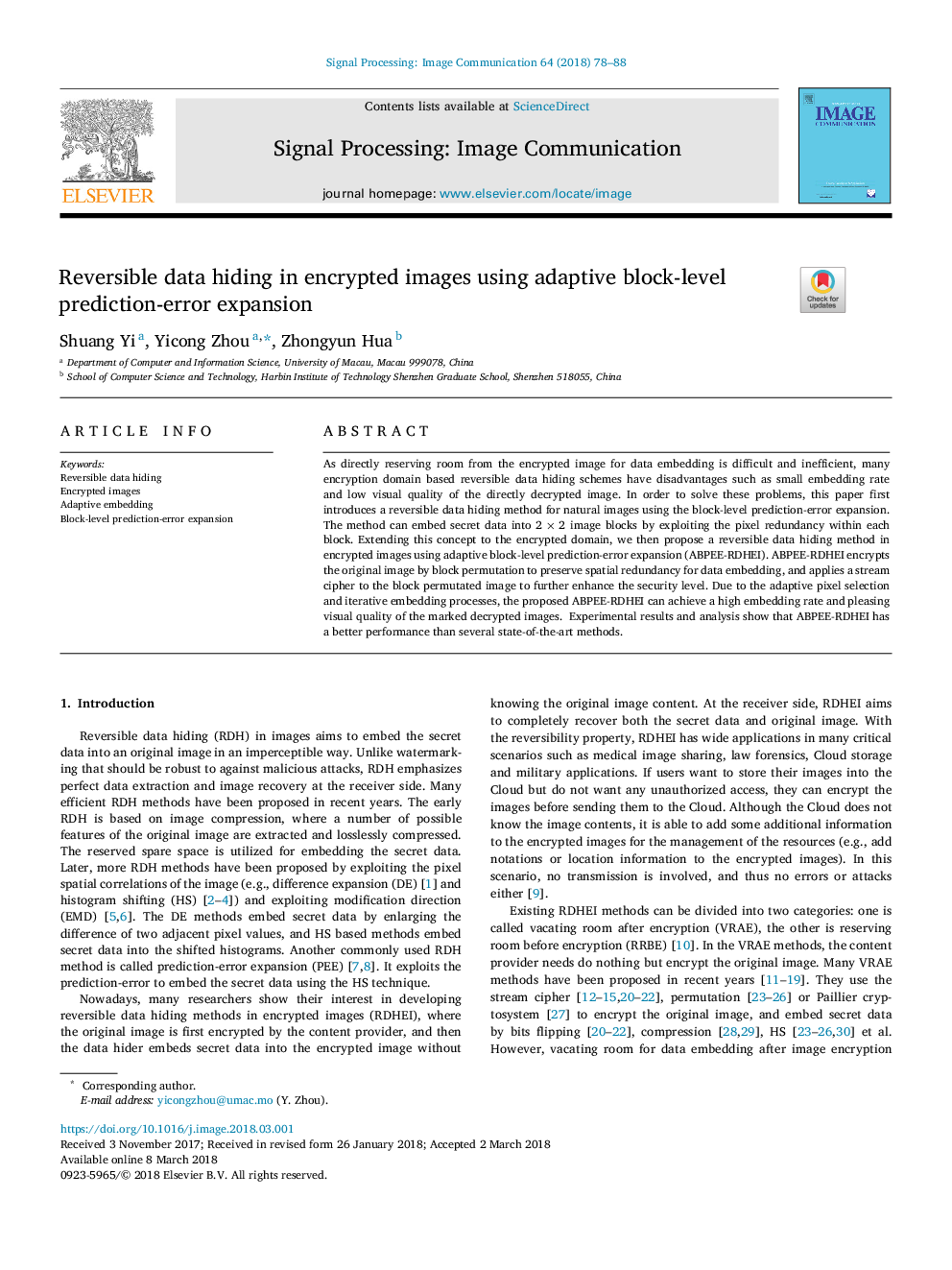| Article ID | Journal | Published Year | Pages | File Type |
|---|---|---|---|---|
| 6941565 | Signal Processing: Image Communication | 2018 | 11 Pages |
Abstract
As directly reserving room from the encrypted image for data embedding is difficult and inefficient, many encryption domain based reversible data hiding schemes have disadvantages such as small embedding rate and low visual quality of the directly decrypted image. In order to solve these problems, this paper first introduces a reversible data hiding method for natural images using the block-level prediction-error expansion. The method can embed secret data into 2Â ÃÂ 2 image blocks by exploiting the pixel redundancy within each block. Extending this concept to the encrypted domain, we then propose a reversible data hiding method in encrypted images using adaptive block-level prediction-error expansion (ABPEE-RDHEI). ABPEE-RDHEI encrypts the original image by block permutation to preserve spatial redundancy for data embedding, and applies a stream cipher to the block permutated image to further enhance the security level. Due to the adaptive pixel selection and iterative embedding processes, the proposed ABPEE-RDHEI can achieve a high embedding rate and pleasing visual quality of the marked decrypted images. Experimental results and analysis show that ABPEE-RDHEI has a better performance than several state-of-the-art methods.
Related Topics
Physical Sciences and Engineering
Computer Science
Computer Vision and Pattern Recognition
Authors
Shuang Yi, Yicong Zhou, Zhongyun Hua,
